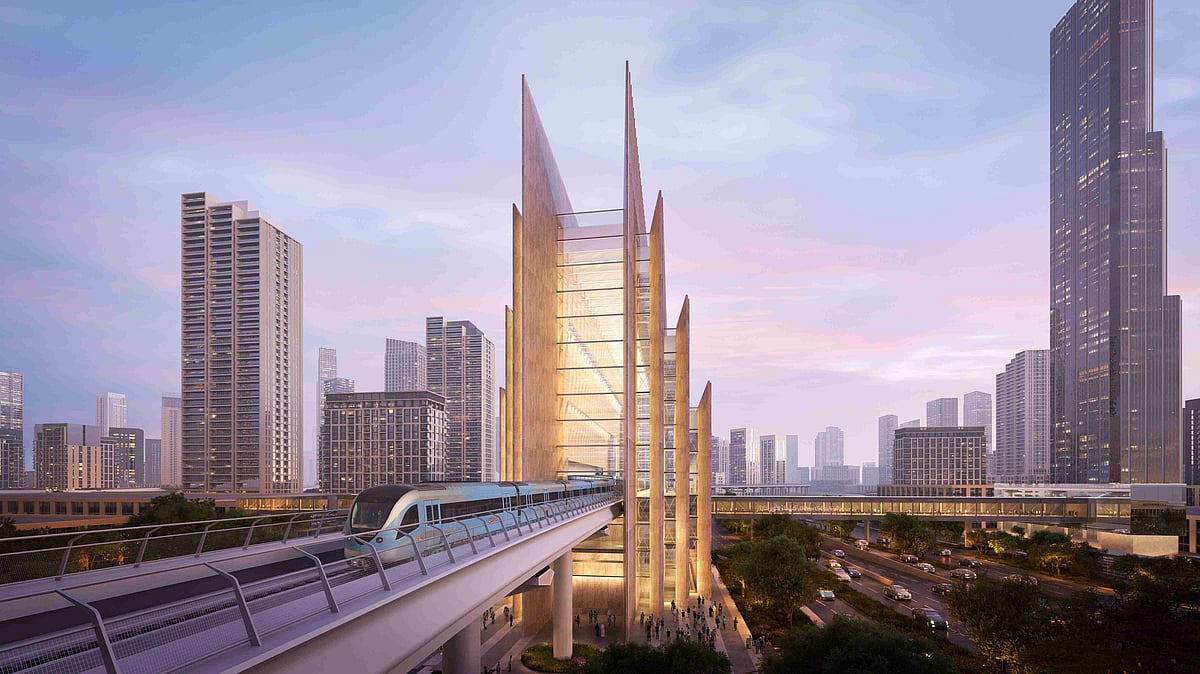No driving license? How to travel around Dubai and still have fun
You don’t need wheels to get around this city — just a little know-how and a Nol card

No, this isn’t about Olivia Rodrigo’s Driving License. This is for anyone like me — still figuring out the pedals and convinced Dubai is impossible without a car.
Spoiler: it’s not. (Yes, feel free to blast the song anyway.)
Relax. You don’t need wheels to get around this city — just a little know-how and a Nol card. Here’s your resident-approved guide to navigating Dubai without a license.
The Dubai Metro
Red Line
The Red Line is the longest and busiest route on the Dubai Metro, running from Centrepoint (formerly Rashidiya) in the northeast all the way to UAE Exchange in Jebel Ali. It traces Sheikh Zayed Road, connecting many of the city’s key areas along the way — including Burj Khalifa/Dubai Mall, DIFC, Business Bay, Mall of the Emirates, Dubai Internet City, Ibn Battuta, and Expo City Dubai.
It’s the line most residents use for everyday commutes, errands, or weekend plans — whether that means heading to work, meeting friends, or visiting one of the big malls. In short, if you live near a Red Line station, you’re already well-connected.
Green Line
If the Red Line is all sleek and new, the Green Line is where you’ll find the city’s heart — Deira, Bur Dubai and the creek‑side charm. It runs from E& (formerly Etisalat) in Al Qusais to Creek station in Al Jaddaf, passing through or near areas like Al Fahidi, Al Ghubaiba, Union and Oud Metha. It’s perfect for when errands take you through vintage Dubai — gold souks, shawarma stops and lanes packed with stories (just check for any service updates).
Blue Line
Still under construction (expected by 2029), the Blue Line will link Mirdif, Warqa, Ras Al Khor, and Dubai Creek Harbour — basically the fast-growing eastern side of the city. When it’s done, it’ll connect with the Red and Green Lines, making the metro network even more unstoppable.
Pro metro tips
Operating hours: 5 AM to midnight (later on weekends).
All trains are air-conditioned, Wi-Fi enabled, and wheelchair accessible.
Grab yourself a Nol Card — your golden ticket across Dubai’s entire public transport system.
There's a Women and Children cabin, too.
Bus routes
Dubai’s bus network is extensive — a modern fleet of 1,390 buses operating across around 187 routes, covering about 88 per cent of the city’s urban areas. The buses are fully air-conditioned, and many bus stops now feature air-conditioned shelters (with hundreds already in place). If you’re not driving, this network gives you serious coverage and flexibility — just check live schedules and route numbers in the official RTA apps.
Tram and monorail
If the Metro is Dubai’s everyday workhorse, the Tram and Palm Monorail are the city’s more laid-back rides — perfect for days when you’re not racing to the office.
Dubai Tram
Running along Al Sufouh Road, the Dubai Tram links Jumeirah Beach Residence (JBR) to Al Sufouh, weaving through Dubai Marina, Palm Jumeirah, Knowledge Village, and Media City. It’s ideal for short city hops — whether you’re beach-bound, mall-bound, or just avoiding parking altogether.
The tram has 11 stations, including stops like Dubai Marina Mall, JBR 1 & 2, Palm Jumeirah, and Al Sufouh. It connects directly to the Dubai Metro Red Line at Jumeirah Lakes Towers (DMCC) and Sobha Realty stations, making transfers easy.
Each carriage is air-conditioned, accessible, and integrated with the Nol card system, so you can tap in and out just like the metro.
(And yes — it runs on ground-based power, not overhead cables, which keeps the skyline neat and the photos Instagram-ready.)
Palm Monorail
The Palm Monorail is less a commuter route and more a joyride. It glides along the trunk of Palm Jumeirah, offering a front-row view of one of Dubai’s most famous landmarks.
Current stops include Palm Gateway (on the mainland), Al Ittihad Park, Nakheel Mall, and Atlantis Aquaventure — with The Pointe station occasionally operating during peak leisure seasons.
A few practical notes:
The monorail runs daily, typically 9 AM – 10 PM, with trains every 10–15 minutes.
You can now use your NOL card for the Palm Monorail .
Think of it as a scenic weekend treat — ideal for beach outings, brunches, or showing visiting friends around.
Marine transport
When you’ve had enough of land traffic, go nautical. Dubai’s abras, water taxis, water buses, and ferries offer a scenic and surprisingly practical alternative.
Abras – The OG mode of crossing Dubai Creek for just Dh1.
Water taxis and buses – Run along Marina, JBR, and Dubai Canal.
Dubai Ferry – For longer, leisurely rides connecting major waterfront destinations.
Pro tip: The sunset ferry from Dubai Marina to Al Ghubaiba is low-key one of the prettiest commutes in the city.
Taxis and apps
Some days, you just don’t want to plan routes — you just want to go.
That’s when RTA taxis, Careem, and Uber step in.
RTA Taxis are cream-coloured, metered, and everywhere.
Careem and Uber let you book sedans, SUVs, or even bikes for short hops.
Just remember: surge pricing during rain or rush hour can make your wallet weep, so plan wisely.
So...what we're trying to say is, who needs a car when the city’s already in motion? In Dubai, the ride’s always waiting — you just need to know where to hop on.
Network Links
GN StoreDownload our app
© Al Nisr Publishing LLC 2025. All rights reserved.